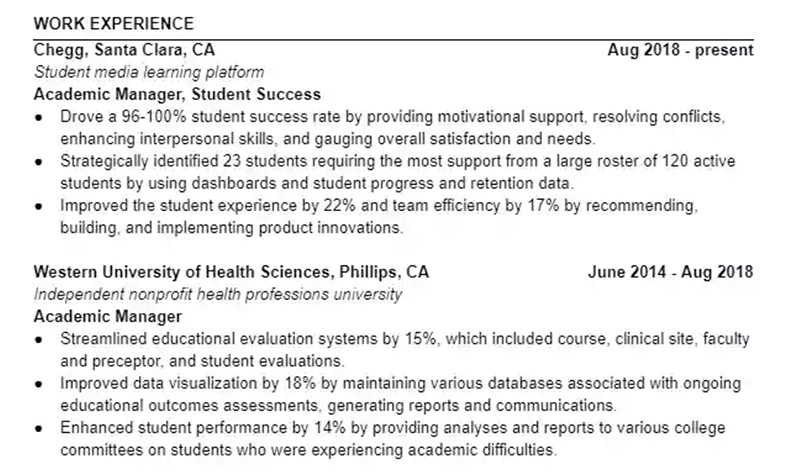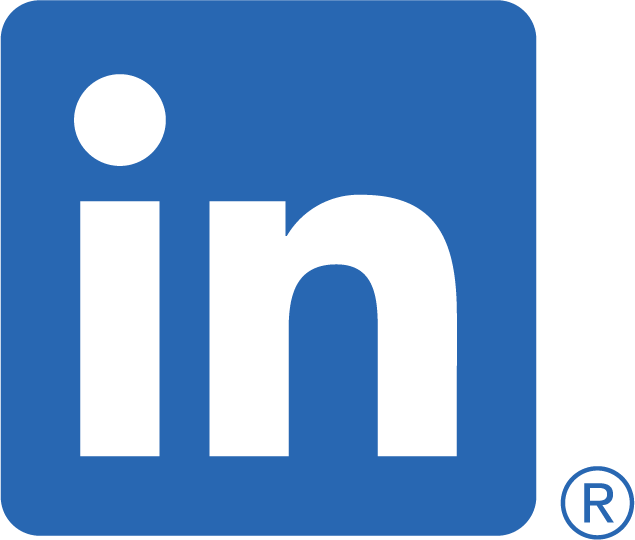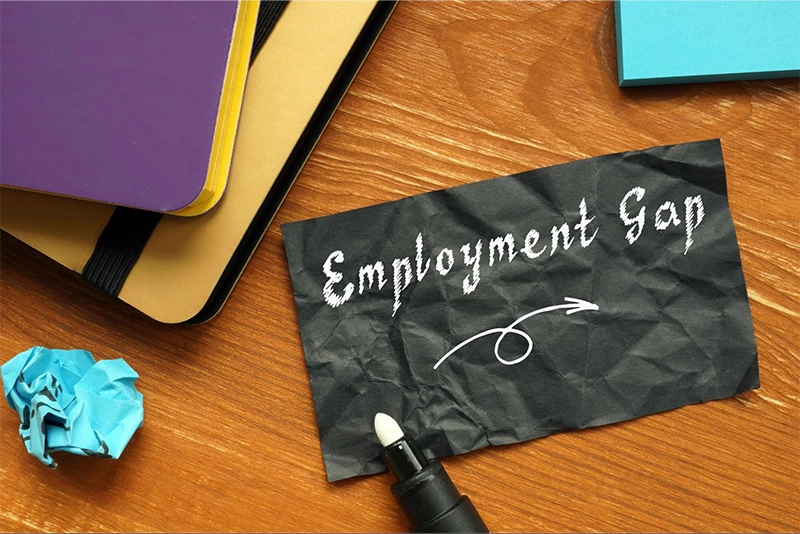Photo by Yuriy K on Shutterstock
If you’re returning to the workforce after more than 12 months away, explain your employment gap in one sentence. This sentence should go at the top of your work history section, before you list your most recent job.
Your career path can be full of surprises, missteps, opportunities, and yes, gaps. A gap of a year or more in your work history will never look good to a recruiter or hiring manager. But presenting a gap the right way can frame it in the best possible light and help you find success on the job hunt.
The caveat is gaps due to the pandemic. Most potential employers expect them and typically they won’t count against you. However, if you have a gap due to pregnancy or raising a family, retirement, or an involuntary exit from a previous job, there are ways to address these properly on your resume and in your eventual interview.
Let’s go over how to explain gaps on a resume in 2023.
Why do I need to mention a gap?
Gaps on your resume will be obvious to the recruiter or hiring manager, as the start and end dates for jobs in your work history section won’t add up. However, gaps between early jobs may be irrelevant because you shouldn’t include work history that’s more than 15 years in the past.
You also don’t need to list jobs that aren’t relevant to your career path. For example, if you took a detour from your event planning career to rent surfboards in Hawaii for a couple of years, there’s no need to put this on your resume if you’re looking to advance your event planning career.
In these cases, if someone asks you about years that are unaccounted for in your work history, you’ll have an answer that should satisfy them. Working somewhere is better than working nowhere.
If you were unemployed and you’re asked about it in your job interview, mention any volunteer work, consulting work, continuing education, or anything else you did to improve yourself or keep your skills sharp while you were away.
The most important thing to remember is to be honest and tell the truth about any unemployment gaps. There are ways to turn a perceived negative into a positive and show the recruiter or hiring manager that you’re the best candidate for the job. Do this by focusing on the constructive experiences you had during a time of unemployment.
Where and how to explain a gap on your resume
All work history, whether it’s time spent at a specific job or a period spent away from the world of work, will be listed in your work history section.
Everything in this section should be in reverse chronological order, with your most recent relevant job listed first. If you’re currently in a gap, explain it at the top of your work history section. If you had a gap in employment in the past 15 years, explain it wherever it lands in reverse chronological order.
People often want to devote paragraphs to explaining their employment gap, but one sentence will satisfy the need to explain the gap without wasting space on your resume.
Here are some examples:
-
“After a period of time taking care of an ailing family member, I am motivated and energized to return to work.”
-
“After a period of personal reflection and career development, I’m energized and excited to return to full-time work.”
Whether you’ve been a parent pausing your career for family, were fired and struggled to find your next gig, left due to health difficulties, or decided to take advantage of an opportunity to travel or seek out a hobby, it’s always vital to tell the truth.
No matter the circumstances, you experienced some form of personal growth or learned something new. This can put a positive spin on your gap in employment.
When writing your resume, use the rest of your work history section to detail your greatest professional accomplishments. Do this using three to five bullet points for each job in your work experience.

Bullet points should be brief, start with a success verb, and include a numerical value.
Success verbs are words like “maximized,” “optimized,” “produced,” and “reduced.” Here’s a handy list of 25.
Success verbs show how your action benefitted your past employer, and the numerical values quantify these successes.
If you’ve been in your career for less than a decade, you should use a one-page resume and include 10-15 bullet points. If you have more than a decade of work history, you can use a two-page resume with up to 25 bullet points. However, there are benefits to having a strong, concise one-page resume even if you’re well into your career.
But remember, while work history should always be listed in reverse chronological order, if you’re returning to work after more than a year of being unemployed the importance of explaining it supersedes this rule. The gap would serve as the most recent entry in your work history.
How to explain a work history gap in the job interview
You can overcome the red flags raised by a gap in employment with careful, honest explanation.
Explaining a gap is better than leaving a potential employer to create their own assumptions and biases. A little clarification goes a long way.
If the circumstances surrounding the gap aren’t all positive, you can still use them to emphasize the professional or personal positives that resulted. For example, if you quit a previous job to start your own business and it failed, you still learned a lot from the experience. Instead of focusing on the failure, point out what you learned.
In that hypothetical scenario, you could tell the interviewer that you gained valuable knowledge by managing your own private firm for two years.
When an interviewer asks you to expand on this “valuable knowledge,” have a list of lessons you learned ready to share.
For example, maybe you grew a team of five and gained valuable contacts and lifelong friendships, even though the firm was ultimately unsuccessful.
Notice how this still follows the principle of the bullet points in your work history section. These statements include success verbs as well as numerical values that quantify the success.
After offering this positive experience, expand on this explanation with any career-oriented hard skills you gained along the way. Hard skills like computer, technical, or analytical skills are easier to quantify than soft skills.
For example, you can say you have a soft skill like empathy, but it might be easier to show evidence for a hard skill like computer programming, sonography, or phlebotomy.
It can be difficult to maneuver telling the truth without oversharing things you’d rather not talk to an interviewer about. If you took time off for your mental health, family health reasons, or another unexpected life experience, you are entitled to keep details to a minimum while mentioning the truth.
While it can be tough to find positives in every circumstance, it’s important to search for something good you can say at an interview and to avoid the ultra-negative. For example, you could say:
- “I took time off for my [mental health, family illness, etc.]. I got more in tune with myself and learned what I really value in terms of a career. My time off helped me gain important knowledge about the kind of career I’m passionate and energized about. The position you’re offering is definitely something I’m excited about pursuing.”
Follow this statement with any hard skills, classes, or training you may have taken while away from work. For example:
- “I was able to volunteer at [organization] while away from work and it helped me learn valuable lessons about the value of teamwork and clear communication.”
What to do if you have multiple gaps in employment
If you have multiple gaps in your work history, don’t fret. You can still present yourself as a front-running candidate even if your career has been on hold for multiple spans of time.
There are always circumstances beyond our control. Sometimes, for one reason or another, you need to take a break from your career. The most important thing to remember is that honesty is always the best policy.
If you were able to stay busy during your leave of absence, mention any skills you improved, continuing education courses you took, or other ways you invested in yourself as a professional. If you have multiple gaps, you can camouflage or draw attention away from them while still remaining truthful.
Add nontraditional work experience, contract or temporary work, training, or certifications that align with the position you’re applying for.
The goal is once again to highlight the constructive things you did during your unemployment and show that you were still active during the time you were away from your career.
Collect specific metrics and achievements for each role, experience, or training and highlight your accomplishments. This will show off your activity and what you are able to bring to your next position.
Try to answer these four questions on your resume:
- What did you do as a [volunteer, caregiver, freelancer, etc.]?
- How many people did you work with or manage?
- What kind of projects did you work on?
- What were the results of your hard work?
Be sure to include any certifications or specialized training you underwent while unemployed, particularly if it pertains to the field you’re applying to. This will help an interviewer see you as an asset to their team and that you are motivated and want to grow as a professional in your field.
How to stay active during an unemployment gap
When you have a gap in employment, it’s important to fill some of your time with activities that can give you experience relevant to your career. This will show that you weren’t idle and can even give your career a boost when you return to the workforce.
Staying active will help keep your mind sharp and your skills current. It will allow you to continue to grow and stay accustomed to the pressures and pace of a workday.
You can develop a new skill, raise your cultural awareness by traveling or seeking out opportunities and connections outside your career area, increase your confidence and independence, or gain work experience through volunteering.
While the circumstances surrounding your gap in employment may not always be positive, it can be a great opportunity for self-development.
Here are a few things you can do to stay active and motivated during a gap in employment.
1. Upskill
Not having a full-time job can be a great opportunity to learn something new. Take a course to continue learning and developing professional skills with online or in-person training. Look at job postings to identify any skill gaps that may prevent you from reentering the workforce and preemptively resolve those. If there’s something you’re interested in but never had time to pursue, consider creating your own course.
2. Travel
Many employers may view a gap year to travel as a positive. It can make a candidate a more well-rounded person. While this isn’t practical for everyone during a time of unemployment, if you love to travel and have the time and means, it’s worth the investment.
Traveling can be a fun and exciting way to show you kept busy and continued to learn new things. It can also be an interesting subject to talk about during an interview.
3. Volunteer
Getting more involved in your community by volunteering at a local organization is a great way to learn and grow both as an individual and a professional.
Not only can you learn more about what impacts your community and the issues around you, but you will also work with others, organize events, learn new skills, and gain a sense of fulfillment.
4. Freelance or take temporary work
List any unique projects or freelance experiences you had during your gap in traditional employment. Whether it was a short project or a lengthy one, if you accomplished something or learned something from it, it’s worth mentioning on your resume.
Final Thoughts
Gaps in employment have become more common due to Covid-19 and the changing world of work. This has forced companies to be more flexible in the way they consider candidates with gaps in their work history.
It will always be challenging to find the best way to present a gap of more than 12 months. But being honest and highlighting the positives from that experience on your resume will improve your chances of getting an interview. And once you’re in the interview, explaining gaps the right way will minimize any red flags and ease any hesitation your interviewer may have in hiring you.
Don’t let a gap in employment discourage you from pursuing the career you want.







